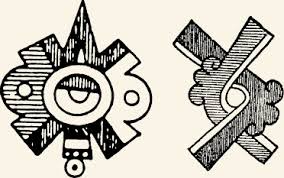Bearing¶
-
class
ollin.movement_analyzers.bearing.Analyzer(movement)[source]¶ Bearing analyzer.
Bearing refers to the angle formed by the movement of an individual with respect to a reference direction. In this case the reference direction is east.
Hence if \(p(t_0) = (x_0, y_0)\) and \(p(t_1) = (x_1, y_1)\) is the position of an individual at times \(t_0\) and \(t_1\) then the bearing at time \(t_0\) is defined by:
\[b = \arctan\left(\frac{y_1 - y_0}{x_0 - x_1}\right)\]-
analyze(movement)[source]¶ Extract bearings from movement data.
Get the bearings of all individuals in movement data at every time step. Will result in an array of size [num_individuals, time_steps - 1] so that:
bearing = results[i, k]
Means that the
i-th individual had a bearing ofbearingat thek-th time step.Parameters: movement ( Movement) – Movement data to analyzeReturns: results – Array of shape [num_individuals, time_steps - 1] containing the bearings of all individuals at every time step. Return type: array
-
plot(ax=None, figsize=(10, 10), num_individual=0, bins=20, width=None, cmap='Reds', alpha=0.8, log=True)[source]¶ Plot distribution of bearing angles.
Parameters: - ax (
matplotlib.axes.Axes, optional) – Axes object in which to plot. - figsize (tuple or list, optional) – Size of figure to create if no axes are provided.
- num_individual (int or tuple or list or array, optional) – Selection of individuals from which to draw bearing angle information. If num_individual=’all’, all information will be plotted.
- bins (int, optional) – Number of bins to use in histogram of bearing distribution. Defaults to 20.
- width (float, optional) – Width of bars in histogram. If none is given, width will be maximum possible before overlap.
- cmap (str, optional) – Colormap to use to assign colors to histogram bars. Defaults to ‘Reds’.
- alpha (float, optional) – Alpha value of plot. Defaults to 0.8.
- ax (
-
